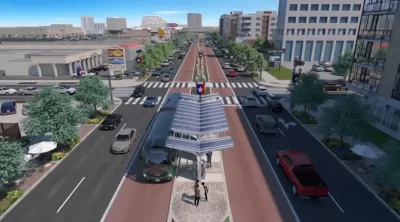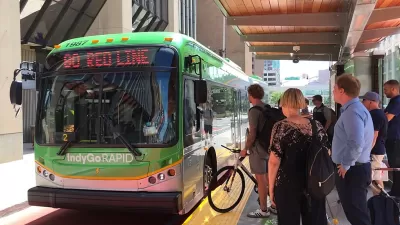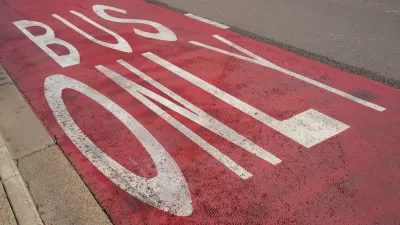A new bus line will bring some of the benefits of bus rapid transit, connecting the city’s airport and downtown.

An article by Andrea Drusch in the San Antonio Report describes how a future Advanced Rapid Transit (ART) line will operate once it opens in 2027.
The north-south Green Line is part of VIA Metropolitan Transit’s plans to bring more rapid transit to San Antonio and will connect the international airport to the city’s downtown and colonial-era missions.
“The first segment was made possible by a windfall of pandemic relief money for VIA, combined with a voter-approved one-eighth-cent sales tax for transit that starts in 2026. The agency has used some of its $270 million in pandemic relief to move the project along before the tax increment funding kicks in, while the approval of a local match allowed VIA to leverage federal money for the rest.”
The line will have dedicated center lanes in some areas and will pick up passengers from the outermost traffic lanes in others. “To reduce stop times, riders are expected to pay for the fare in advance, possibly by mobile app. No ticket will be required to board. Raised boarding platforms also will minimize stop times, allowing buses to run at more frequent, predictable intervals.” The project also includes funding for new sidewalks and pedestrian crossing improvements.
The project is hindered by conflict with the Texas Department of Transportation (TxDOT), Drusch adds. “Notably, the Green Line buses must run alongside regular traffic when passing under highways, where the state retains the right-of-way.”
FULL STORY: Hop on the Green Line: How VIA’s new rapid bus route will operate

Trump Administration Could Effectively End Housing Voucher Program
Federal officials are eyeing major cuts to the Section 8 program that helps millions of low-income households pay rent.

Planetizen Federal Action Tracker
A weekly monitor of how Trump’s orders and actions are impacting planners and planning in America.

Ken Jennings Launches Transit Web Series
The Jeopardy champ wants you to ride public transit.

California Invests Additional $5M in Electric School Buses
The state wants to electrify all of its school bus fleets by 2035.

Austin Launches $2M Homelessness Prevention Fund
A new grant program from the city’s Homeless Strategy Office will fund rental assistance and supportive services.

Alabama School Forestry Initiative Brings Trees to Schoolyards
Trees can improve physical and mental health for students and commnity members.
Urban Design for Planners 1: Software Tools
This six-course series explores essential urban design concepts using open source software and equips planners with the tools they need to participate fully in the urban design process.
Planning for Universal Design
Learn the tools for implementing Universal Design in planning regulations.
Ada County Highway District
Clanton & Associates, Inc.
Jessamine County Fiscal Court
Institute for Housing and Urban Development Studies (IHS)
City of Grandview
Harvard GSD Executive Education
Toledo-Lucas County Plan Commissions
Salt Lake City
NYU Wagner Graduate School of Public Service





























